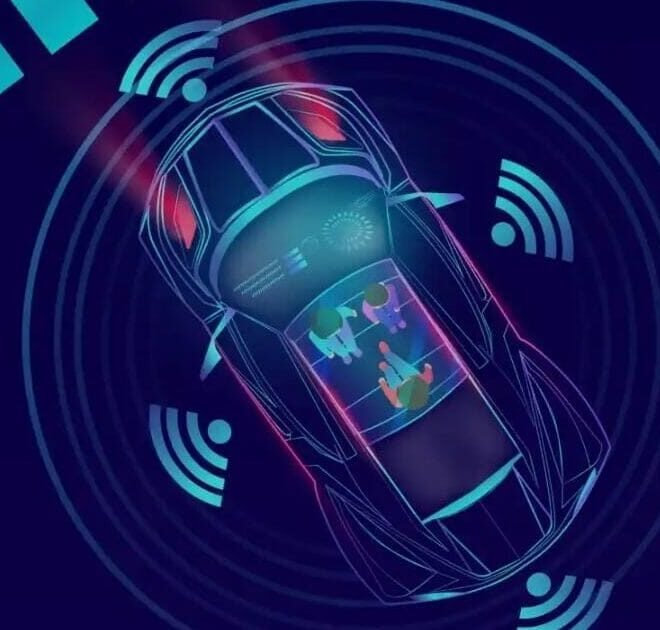what is connected car technology
Connected Car Technology
Connected car technology represents a transformative shift in the automotive industry. It integrates advanced digital and communication technologies into vehicles, allowing them to interact with their surroundings, other vehicles, infrastructure, and even with drivers and passengers in new, intelligent ways. This technology is not just about enhancing convenience—it’s also about improving safety, efficiency, and the overall driving experience.what is connected car technology
What is Connected Car Technology?

Connected car technology refers to vehicles equipped with internet access and, often, a wireless local area network (LAN). This enables the car to share data with devices inside and outside the vehicle. The technology allows vehicles to communicate with each other (vehicle-to-vehicle or V2V), with what is connected car technology infrastructure (vehicle-to-infrastructure or V2I), and with the cloud (vehicle-to-network or V2N), forming a broader ecosystem known as Vehicle-to-Everything (V2X).
A vehicle can perform over-the-air software updates, receive real-time traffic updates, stream entertainment, notify emergency services in the event of an accident, and even assist drivers by advising them of upcoming dangers.what is connected car technology
Key Components of Connected Cars what is connected car technology
Several core technologies drive the connected car ecosystem:
1. Telematics: This involves the integration of telecommunications and informatics. Vehicle health, location, speed, and other important data can be monitored by telematics systems and frequently sent to a central server for analysis.
2.Embedded SIMs (eSIMs): These are small, programmable SIM cards installed within a car’s system, enabling constant internet connectivity without relying on a smartphone or external hotspot.
3. On-board Diagnostics (OBD-II): This port collects vehicle performance data, which can be used for maintenance alerts and performance monitoring.
4. Sensors and Cameras: These tools gather information about the vehicle’s surroundings, enabling features like lane departure warnings, adaptive cruise control, and parking assistance.
5. Cloud Computing and Big Data: Connected cars generate massive amounts of data. Cloud services store, analyze, and deliver insights to both the vehicle and the user in real time.
6. Artificial Intelligence (AI) and Machine Learning (ML): AI systems help process data from sensors to make decisions, such as applying brakes automatically if a collision is imminent.what is connected car technology
Features and Applications
Connected car technology enables a wide range of features designed to enhance user experience, safety, and vehicle performance:
Navigation and Real-Time Traffic Updates: With live GPS and cloud connectivity, cars can reroute based on traffic, construction, or accidents.
Infotainment: Drivers and passengers can use voice assistants, stream music, and seamlessly connect their smartphones to the vehicle. Remote what is connected car technology
Diagnostics and Maintenance: Vehicles can notify owners of maintenance requirements or potential issues, frequently enabling remote troubleshooting or automatic appointment scheduling.
Emergency Assistance: In the event of an accident, connected vehicles can automatically notify emergency responders with the car’s exact location.

Fleet Management: For businesses, connected car technology enables efficient fleet tracking, fuel management, route optimization, and predictive maintenance.
Support for
Autonomous Driving: Connected technology lays the groundwork for advanced driver assistance systems (ADAS), despite the fact that fully autonomous automobiles are still in the process of being refined.what is connected car technology
Benefits of Connected Car Technology
1. Enhanced Safety: Autonomous braking, collision detection, blind-spot monitoring, and emergency response all lower the likelihood of collisions.
2. Improved Efficiency: Real-time traffic data and predictive navigation help reduce fuel consumption and travel time.
3. Convenience: Features like remote start, climate control, and keyless entry provide users with enhanced comfort and ease of use.what is connected car technology
4. Environmental Impact: When electric vehicles (EVs) are used in conjunction with optimized driving and traffic flow, emissions can be reduced.
5. Cost Savings: Predictive maintenance and fuel efficiency features can save money over time by avoiding unnecessary repairs and reducing fuel consumption.
Challenges and Concerns
Despite its many advantages, connected car technology has some what is connected car technology
drawbacks: Cybersecurity: A connected car is a potential target for hackers. If not properly secured, attackers could gain access to vehicle controls or personal data.
Privacy: As a result of the continuous collection of data, concerns arise regarding its storage, utilization, and access.what is connected car technology
Putting this into use on a large scale what is connected car technology necessitates a substantial investment.
Cost and Accessibility: Advanced features typically come with higher prices, making them only available to high-end models and tech-savvy customers.
The Future of Connected Cars
The evolution of connected car technology is closely tied to broader trends in smart cities, the Internet of Things (IoT), and autonomous driving. As 5G networks become more widespread, the speed and reliability of vehicle communication will drastically improve, enabling more real-time data sharing and faster decision-making.what is connected car technology
Looking ahead, we can expect further integration with home automation systems, enabling vehicles to communicate with household devices, open garage doors, adjust home thermostats, or even pre-order groceries while en route home. Additionally, as vehicle-to-vehicle communication becomes standardized, traffic accidents could significantly decrease, creating safer roads for everyone.
Autonomous vehicles also rely heavily on connected technology. While still under development, the eventual mass adoption of self-driving cars will depend on fast, secure, and seamless communication between vehicles and their surroundings.what is connected car technology
Conclusion
Connected car technology is revolutionizing how we think about transportation. From enhancing road safety to offering unprecedented convenience and personalization, it represents a pivotal step toward smarter, more efficient mobility. While there are still challenges to overcome—particularly in terms of security, privacy, and infrastructure—the benefits and potential of this technology make it a cornerstone of the automotive industry’s future.what is connected car technology
As innovation continues, connected cars are poised to become more than just vehicles—they will be intelligent companions on the road, integrated into a broader digital ecosystem that makes mobility safer, smarter, and more sustainable.
